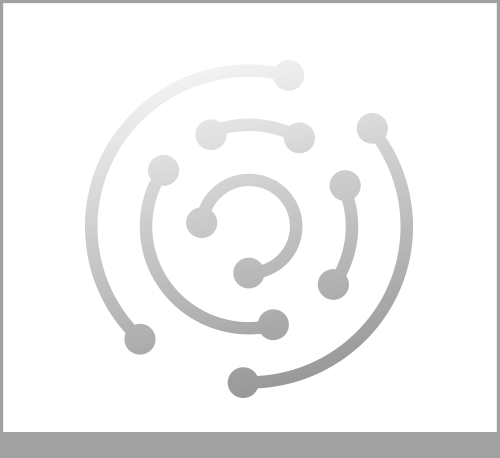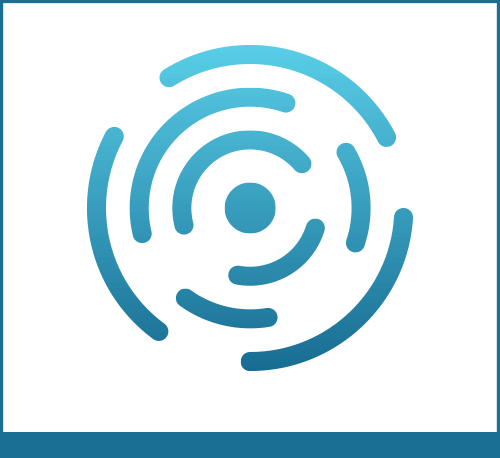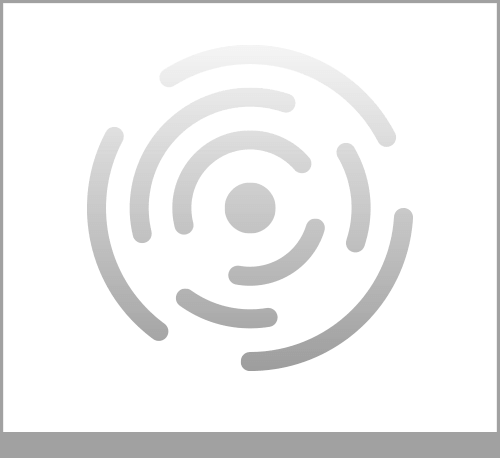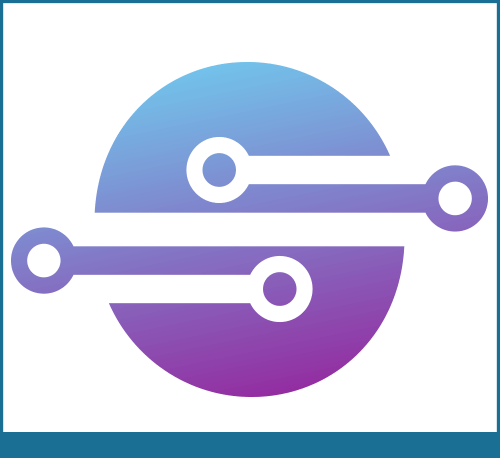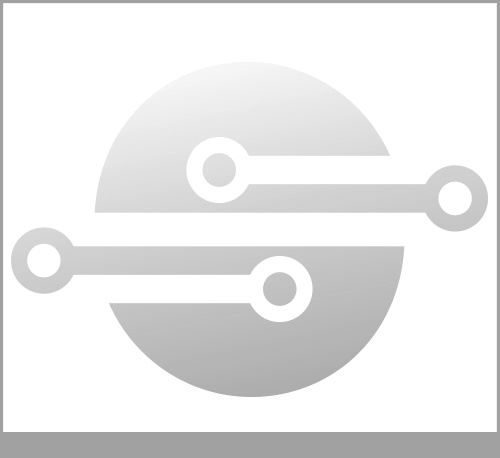Harnessing the Power of LoRA in Large Language Models: A Deep Dive into the Future of AI

LoRA reduces the computational resources required for fine-tuning large language models. By using low-rank matrices to update specific parameters, the approach drastically cuts down the number of parameters that need to be trained. This reduction is crucial https://chat.openai.com/ for practical applications, as fully retraining LLM models like GPT-3 is beyond the resource capabilities of most organizations. LoRA enhances the training and adaptation efficiency of large language models like OpenAI’s GPT-3 and Meta’s LLaMA.
By applying LoRA, the model gains new capabilities or enhances its existing ones, such as better understanding of specific languages, topics, or even styles of communication. A smaller r value means fewer parameters and faster training times, although this may result in a compromise on model performance if r is set too low. LoRA preserves the integrity of pre-trained model weights, which is a significant advantage. In traditional fine-tuning, all weights of the model are subject to change, which can lead to a loss of the general knowledge the model originally possessed. LoRA’s approach of selectively updating weights through low-rank matrices ensures that the core structure and knowledge embedded in the pre-trained model are largely maintained. We should now have a working understanding of LoRA, the several variants of this technique that have been proposed, and how these ideas can be applied in practice.
Its ability to adapt models to specific tasks and datasets, while retaining their broad knowledge base, makes it an invaluable tool in the rapidly evolving landscape of healthcare technology. In comparison, switching between models that are finetuned end-to-end on different tasks requires loading all model parameters in and out of memory, creating a significant I/O bottleneck. LoRA’s efficient parameterization of the weight update derived from finetuning makes switching between tasks efficient and easy. Several variants of adapter layers have been proposed that are more efficient and even go beyond language models [4, 5]. For example, authors in [3] simplify the structure of adapter layers such that only a single task-specific adapter is added to each transformer block, as well as an extra LayerNorm module; see above.

The magic of LoRA lies in its ability to tweak part of the model’s existing parameters in a way that enhances its performance without overhauling its core structure and knowledge. These matrices are much smaller in size compared to the original model parameters, making them easier to adjust and fine-tune. In recent years, Large Language Models (LLMs), also known as Foundational Models, have been trained using large datasets and models with a massive number of parameters, such as the common GPT-3 (175B parameters). The emergence of ChatGPT also indicates the generalization level of LLMs, as they have performed well in common problems.
The adapter is added to the UNet, and only the LoRA layers are filtered for optimization in lora_layers. In essence, LoRA represents a smarter, more efficient way to leverage the power of large language models, making them more adaptable, accessible, and effective. As we move forward, LoRA’s role in shaping the future of AI and language processing becomes increasingly evident, promising exciting developments and applications across various domains. In this comprehensive exploration, we will dive into the world of LLMs, uncovering their significance and the transformative impact of LoRA.
For instance, a QLoRA-tuned version of the Llama 65B model can give ChatGPT3.5-turbo (a whopping 175B model) a run for its money in specific tests. While the future of LoRA in AI is promising, it is not without its challenges. One major concern is the ethical implications of such advanced technology. Issues such as privacy, data security, and the potential for AI bias need to be rigorously addressed to ensure that the advancement of LLMs benefits society as a whole. Additionally, these models are being used in the translation and localisation of content, making it accessible to a global audience and bridging cultural and linguistic barriers.
LoRA Quick Start Guide
Furthermore, these models are revolutionising customer service in banking and finance. By understanding and responding to customer queries more effectively, they are enhancing the customer experience, reducing response times, and improving the accuracy of information provided. This breakthrough in technology has expanded the community of Stable Diffusion models and has enabled them to be uploaded to the CivitAI website. When saving the model, only the weights trained by LoRA can be saved, which will facilitate sharing of your weights/patches. Developers can get started fine-tuning LoRA Land LLMs today through Predibase’s free trial offering.
Predibase argues that the cost of building GPT models from scratch or even fine-tuning an existing LLM with billions of parameters is extremely prohibitive. The biggest impact of these changes is the fact that LoRA has no added inference latency compared to the original pretrained model; see below. When deploying a finetuned LoRA model into production, we can directly compute and store the updated weight matrix derived from LoRA. As such, the structure of the model is identical to the pretrained model—the weights are just different. Assuming we have access to an accelerator that supports arithmetic at lower precisions, we can actually save costs by performing the model’s forward and backward pass using lower precision. Plus, we usually do not sacrifice performance when performing such quantization—we get these efficiency benefits basically for free!
LoRA reduces the number of trainable parameters by learning pairs of rank-decompostion matrices while freezing the original weights. This vastly reduces the storage requirement for large language models adapted to specific tasks and enables efficient task-switching during deployment all without introducing inference latency. LoRA also outperforms several other adaptation methods including adapter, prefix-tuning, and fine-tuning.
New approaches with language models in Machine Learning
This repo contains the source code of the Python package loralib and several examples of how to integrate it with PyTorch models, such as those in Hugging Face. The training script has many parameters to help you customize your training run. All of the parameters and their descriptions are found in the parse_args() function.
Within this overview, we will learn about a popular solution to the issues outlined above—parameter-efficient finetuning. Instead of training the full model end-to-end, parameter-efficient finetuning leaves pretrained model weights fixed and only adapts a small number of task-specific parameters during finetuning. Such an approach drastically reduces memory overhead, simplifies the storage/deployment process, and allows us to finetune LLMs with more accessible hardware. Although the overview will include a many techniques (e.g., prefix tuning and adapter layers), our focus will be upon Low-Rank Adaptation (LoRA) [1], a simple and widely-used approach for efficiently finetuning LLMs.
For only a slight reduction in downstream task performance, LoRA and QLoRA can perform comparably to the original LLaMA-7/13B-Alpaca models but with parameter counts at only about 2% of the originals. Before training, freeze the original LLM model and set only the LoRA parameters to be trainable. The startup says its mission is to help smaller companies compete with the biggest AI firms, such as OpenAI and Google LLC, by removing the need to use complex machine learning tools and replacing it with an easy-to-use framework. Unlike quantized training, quantization-aware training may not save any cost during the training process.
Please follow the instructions in examples/NLU/ to reproduce our results. As with the script parameters, a walkthrough of the training script is provided in the Text-to-image training guide. Instead, this guide takes a look at the LoRA relevant parts of the script. The following sections highlight parts of the training script that are important for understanding how to modify it, but it doesn’t cover every aspect of the script in detail. If you’re interested in learning more, feel free to read through the script and let us know if you have any questions or concerns.
To download LLaMA-2 (this requires being granted access to LLaMA-2 via HuggingFace first), we just i) download the model from HuggingFace and ii) convert this into the format needed for Lit-GPT. As we will see, Low-Rank Adaptation (LoRA) [1] checks all of these boxes! Due to its practical utility, LoRA has also been explored heavily within the research community, leading to a plethora of variants and extensions. Beyond the burden of storing and deploying multiple finetuned models, training large models end-to-end is difficult in itself—the memory overhead and amount of computation required6 is significant. To learn more, take a look at the link below, which details the finetuning process for the LLaMA-2 70B model!
First, it is important to understand how much GPU memory will be used during model training. For details, please refer to Jacob Stern’s comprehensive guide to memory usage in PyTorch. This method is particularly useful in scenarios where multiple clients need fine-tuned models for different applications, as it allows for creating a set of weights for each specific use case without the need for separate models. Large Language Models (LLM) are the most significant innovation in natural language processing, and probably in AI in general, in our generation. LLMs like OpenAI’s GPT-4 and Google’s PaLM 2 and more recently Gemini achieve human-like performance for a wide range of cognitive tasks involving text, images, and video.
So customers can simply choose the most appropriate LLM for their use case and fine-tune it in a very affordable way. The LLM collection, called LoRA Land, is designed to cater to use cases such as text summarization, code generation and more. Predibase says it’s said to offer a more cost-effective way for enterprises to train highly accurate, specialized generative AI applications. However, authors in [24] use 8X A100 GPUs, so the hour of finetuning time occurs on a (relatively) beefy setup. Additionally, encoder-decoder models have an extra cross attention module within each block of the decoder following the masked self-attention.
Instead of training the whole model again for each task, LoRA freezes the pre-trained model and adds smaller trainable matrices to each model layer. These matrices help the model adapt to different tasks without changing all the parameters. In recent years, generative AI models like DALLE and Stable-diffusion have demonstrated the ability to generate high-quality and high-resolution images. However, these models require a significant amount of computing resources to train due to the need for high-resolution training data. Now, the integration of LoRA technology into Stable-diffusion has led to the release of Stable Diffusion LoRA, which changes this paradigm. LoRA modifies the fine-tuning process by freezing the original model weights and applying changes to a separate set of weights, which are then added to the original parameters.
Traditional fine-tuning methods require updating all model parameters, which is computationally intensive. LoRA, instead, introduces low-rank matrices that only modify a subset of the original model’s weights. These matrices are Chat PG small compared to the full set of parameters, enabling more efficient updates. The approach focuses on altering the weight matrices in the transformer layers of the model, specifically targeting the most impactful parameters.
LoRA: Low-Rank Adaptation of Large Language Models
Doing so allows data scientists to fine-tune an LLM such as GPT-3 by updating as few as 0.01% of the original parameters. Let’s say you want to use this language model for different tasks, like summarizing articles or answering questions. The problem is that the model is so big and has so many parameters that it becomes difficult and expensive to use for each task separately. Prompt engineering, fine-tuning, and model training are all viable options to get domain or task-specific results from a Large Language Model (LLM).

The availability and ease-of-use of open source implementations, such as those provided by HuggingFace, allow for plug-and-play adaptations of LoRA and PEFT methods to any LLM. The central idea underlying LoRA, and PEFT more generally, is to lora generative ai approximate the update to a large parameter model using a low-dimension update. This low-dimension update contains most of the information (gradient signal) contained in the full update but requires much less computation time and memory.
Non-LoRA baselines, except for adapter on GPT-2 large, are taken from Li and Liang (2021). 🤗 Accelerate is a library for helping you train on multiple GPUs/TPUs or with mixed-precision. It’ll automatically configure your training setup based on your hardware and environment. It’s all about being thrifty with memory and computational power by using fewer bits to represent numbers. QLoRA goes a step further with “double quantization,” making things even more efficient. Moreover, there are technical challenges in scaling LoRA-enhanced LLMs while maintaining their efficiency and effectiveness.
With AMP, we can train arbitrary neural networks using lower precision in certain portions of the network architecture. This approach can cut training time in half while achieving comparable performance without any code changes. To try this out, check out the AMP package from NVIDIA, which has easy-to-use integrations with common packages like PyTorch, or the mixed-precision training options within HuggingFace. One takeaway is that the reduction in GPU memory usage provided by the use of LoRA and PEFT is huge, ranging anywhere from % depending on the type and size of the model. Furthermore, if you are willing to sacrifice some accuracy, quantized versions of LoRA can further cut memory usage by half or more.
What is LoRA?
From its technical intricacies to its real-world applications, we’ll unfold how LoRA is not just advancing language models but is also setting a new course for the future of AI. Whether you’re a tech enthusiast, a professional in the field, or simply curious about the future of artificial intelligence, this journey into the heart of LoRA and large language models promises to be enlightening and inspiring. The Cloze objective, also commonly referred to as masked language modeling (MLM), is a self-supervised objective that is commonly used for pretraining non-generative language models like BERT. Mathematically, you can think of this as projecting the weight matrix into two low-dimensional subspaces (where the learning now occurs) and then reconsolidating it in the original space.
However, some hybrid and additive fine-tuning methods such as MAM can increase memory usage. The original version fo the RedPajama open source LLM used the entire 20,000 examples. Our researchers fine-tuned a separate version using their curated 10,000 examples.
By “merge”, we mean combine the result of LoRA with the pretrained model’s weights, such that added inference latency is avoided. The Lit-GPT library contains a variety of useful scripts that can be used to finetune open-source LLMs using LoRA; see here for a full guide. After cloning the Lit-GPT repository and installing dependencies, the first step is to download a pretrained model to finetune with LoRA.
- LoRA represents a significant leap forward in the field of AI and language processing.
- Therefore, in recent years, researchers have focused on efficient fine-tuning, known as Parameter-Efficient Fine-Tuning (PEFT).
- At the forefront of this technological revolution is a groundbreaking concept known as Low-Rank Adaptation (LoRA).
LoRA transforms the model parameters into a lower-rank dimension, reducing the number of parameters that need training, thus speeding up the process and lowering costs. LLM tuning is a specialized process that takes a pre-trained language model and customizes it for specific tasks or domains. It leverages the general language understanding, acquired by the model during its initial training phase, and adapts it to more specialized requirements. The advantage of LLM tuning is that it does not require re-training the entire model, so, at least in principle, it should be much simpler and less computationally intensive than training a new LLM.
Within this section, we have only scratched the surface of how to use LoRA effectively in practice. Although this serves as a good starting point, there are so many details/findings that one could gather from running experiments with LoRA and learning the best practices for this technique. In this section, we will briefly overview how we can use Lit-GPT to finetune an LLM with LoRA and provide some helpful tips for using LoRA in practice. Before diving into LoRA and its (many) variants, we need to go over some background information that’s necessary for understanding the rest of the overview. Given that this writeup is already quite long, we’ll keep this section brief and provide links to further reading for those who are less familiar.
Due to the public availability of many high-quality pretrained LLMs, most practitioners can simply download a pretrained model and focus upon the finetuning process without ever having to pretrain a model from scratch. LLaMA-Adapter [24] (shown above) is not based upon LoRA, but it is nonetheless a recent (and popular) variant of parameter-efficient finetuning for LLMs. At a high level, LLaMA-Adapter finetunes pretrained LLMs to improve their instruction following capabilities using a very small number of added trainable parameters.
However, this approach lags behind the performance of finetuning, making finetuning a common approach for creating specialized LLMs in practice. First introduced by Microsoft via the whitepaper here, LoRA is a technique used in language models to make them more efficient and easier for different tasks. Imagine you have a big language model that knows much about language and can understand and generate sentences. This preservation is crucial for maintaining the model’s broad understanding and capabilities while still allowing it to adapt to specific tasks or datasets.
As we will see, finetuning large models end-to-end is not cheap and/or easy by any means. SFT trains the language model over a set of high-quality reference outputs using a next token prediction objective, and the LLM learns to mimic the style and format of responses within this dataset. In contrast, RLHF collects feedback (from humans) on the LLM’s output and uses this feedback as a training signal. Diffusers uses ~peft.LoraConfig from the PEFT library to set up the parameters of the LoRA adapter such as the rank, alpha, and which modules to insert the LoRA weights into.
The following figure shows the downstream tasks used for GPT-1, which include common NLP tasks such as classification, hypothesis testing, similarity comparison, and multiple-choice questions. The finetuning script within Lit-GPT has several default configurations that are used for LoRA; see below. We can edit these options in the finetune/lora.py file prior to performing a finetuning run. For example, we might want to change the value of r that is used, or apply LoRA to all layers within the transformer. Studies have shown that LoRA training pipelines can use incredibly small rank-decomposition subspaces (relative to the size of the original space).
LoRA represents a significant leap forward in the field of AI and language processing. Its potential to transform industries, enhance user experiences, and bridge cultural divides positions it as a key player in shaping the future of AI. As we continue to explore and refine this technology, it’s clear that LoRA will not only advance the capabilities of LLMs but also redefine the boundaries of what’s possible in the world of artificial intelligence. At the forefront of this technological revolution is a groundbreaking concept known as Low-Rank Adaptation (LoRA).

LoRA is transforming the way we develop and utilise language models, ensuring they are more accessible, adaptable, and powerful than ever before. There are also many resources online for generating/training models using Colab or personal computers. Recently, the Stable-diffusion community has open-sourced many projects and provided GUI interfaces, allowing even non-programmers to train high-quality generative AI. In the past, make LLM or Foundation Models (such as the GPT series) applicable to various downstream tasks, the goal of training the model (Φ) was to ensure that the model performs well in handling multiple different tasks (Z).
Then, the model can be finetuned using a variety of different techniques (e.g., SFT, RLHF, task-specific finetuning, etc.) to fulfill its role in a desired application. As models have grown increasingly larger, directly fine-tuning all parameters incurs significant costs. Therefore, in recent years, researchers have focused on efficient fine-tuning, known as Parameter-Efficient Fine-Tuning (PEFT). The idea is to use the small LoRA network inserted into specific layers to make the model adaptable to different tasks. By enabling efficient and targeted fine-tuning of large language models, LoRA opens up new possibilities for enhancing healthcare services, accelerating medical research, and making personalized medicine more accessible.
This selective updating streamlines the adaptation process, making it significantly quicker and more efficient. It allows the model to adapt to new tasks or datasets without the need to extensively retrain the entire model. When experiments are performed with generative LLMs, we see that LoRA handles these workloads well and is effective even with much larger models; see above. Notably, we see that LoRA matches or exceeds the performance of end-to-end finetuning on every dataset that is tested. Furthermore, LoRA’s performance is incredibly stable with respect to the number of trainable parameters that are used, especially when compared to techniques like prefix tuning; see below.
However, while LLMs have tremendous potential, they require huge computing resources to train, meaning that only a small group of technology giants and research groups are able to build their own LLMs. How can the rest of the world create specific LLM tools to suit their needs?. To prove its point, Predibase says the 25 LLMs in LoRA Land were fine-tuned at an average GPU cost of less than $8. Customers will therefore be able to use LoRA Land to fine-tune potentially hundreds of LLMs using a single GPU, the startup said. Not only is it cheaper, but by not waiting for a cold GPU to spin up before fine-tuning each model, companies can also test and iterate much faster than before. You can foun additiona information about ai customer service and artificial intelligence and NLP. Predibase says it has incorporated these techniques into its fine-tuning platform.
It ensures that the fine-tuned model retains the strengths of the original model, such as its understanding of language and context, while gaining new capabilities or improved performance in targeted areas. LoRA is a practically useful tool that gives (almost) anyone the power to train a specialized LLM over their data. As a result, LoRA has been widely studied within the AI research community, leading to a variety of extensions, alternatives, and practical tools to go along with it. One of the most notable extensions is QLoRa, which combines LoRA with model quantization to further reduce the memory overhead of LLM finetuning.
As we can see, adding LoRA to a layer directly learns the update to the underlying layer’s weights. The core idea behind LoRA is to model this update to the model’s parameters with a low-rank decomposition9, implemented in practice as a pair of linear projections. LoRA leaves the pretrained layers of the LLM fixed and injects a trainable rank decomposition matrix into each layer of the model; see below. All language models are pretrained using some form of a self-supervised learning objective2. For example, generative language models are usually pretrained using a next token prediction objective, while encoder-only and encoder-decoder models commonly use a Cloze task.
For example, we can use LoRA to finetune GPT-3 using only 0.01% of total parameters and still achieve performance comparable to that of full finetuning. Additionally, to get the most out of LoRA, practitioners such as Sebastian Raschka have provided thorough guides that detail optimal hyperparameter settings and strategies for utilizing these methods. LoRA provides one of the best and easiest ways to reduce LLM parameter counts and memory usage and increase the speed of fine-tuning and inference.
Predibase debuts LoRA Land: 25 open-source LLMs that can be fine-tuned for almost any AI use – SiliconANGLE News
Predibase debuts LoRA Land: 25 open-source LLMs that can be fine-tuned for almost any AI use.
Posted: Tue, 20 Feb 2024 08:00:00 GMT [source]
To answer this question, we can look at prior research [15], which shows that large models (e.g., LLMs) tend to have a low intrinsic dimension. Although this idea sounds complicated, it just means that the weight matrices of very large models tend to be low rank. We can achieve comparable performance by decomposing these weight matrices into a representation that has way fewer trainable parameters; see above. Because no finetuning is required and one model can be used for all tasks, in-context learning is (by far) the easiest way to adapt an LLM to solve a downstream task.




